| Silver shaded | Silver shell | Golden tabby | Golden Shaded | Golden Shell |
In this article, I will go into more detail on the features of a silver/golden, shaded/shell, as well as a golden tabby.
I will use the FIFe standard as well as things taught by breeders of other breeds like Persians and British longhair. I will also give some examples of other breeds and why the same color might look a bit different in different breeds. I will use the base color black for the examples, remember those cats can be in any color (n, a, f, g, d, e), but I will use black (n) for the text examples and the base color black for pictures (n, a, f, g).
|
Designation |
|
| Silver shaded | ns 11, as 11, fs 11, gs 11, ds 11 and es 11 |
| Silver shell | ns 12, as 12, fs 12, gs 12, ds 12 and es 12 |
| Golden Tabby | All colors and patterns (ny, ay, fy, gy, dy, ey) and (21, 22, 23, 24 and 25) |
| Golden Shaded | ny 11, ay 11, fy, 11, gy 11, dy 11 and ey 11 |
| Golden Shell | ny 12, ay 12, fy 12, gy 12, dy 12 and ey 12 |
If you read the article about Shaded and Shell genetics you will see that golden is exactly the same inheritance, just without the silver.
Golden is a cat who does have the wideband gene but no silver. For example, let's say you got a ns 11 (a black silver shaded), then you get a kitten who is the same as the adult but without the silver, this kitten will be ny 11 (a black golden shaded)
So the genetic designation would be like this:
| ns 11 | AA, II, Wbwb AA, Ii, Wbwb Aa, II, Wbwb Aa, Ii, Wbwb |
| ny 11 | AA, ii, Wbwb Aa, ii, Wbwb |
First of all, I want to address an issue I see all the time. Many breeders of shaded compare Maine Coon with Persians, which is not a good idea. The reason for this is the differences in the coats, a Persian coat is a double layer, longhair coat of equal length (the two layers are equally long), the Maine Coon coat is a double layer, semi longhair coat of different length (a shorter undercoat with a longer top coat). Do you see the problem? A Maine Coon can never be equally pale as a Persian, due to its shorter coat and different length.
Let's start with the description but also correct some wrong sayings!
Please remember, that in the beginning there were almost no differences between Shaded and Chinchilla Persians, they were all very dark.
Chinchilla was approved for the show in 1919. Chinchilla and Shaded got their color standards in 1976. Golden was approved as late as 1984, at this point all those colors got the same point system as well as standard to follow. The Chinchilla Persian breeders worked very hard to improve the color making them as light as possible, they could be so light that their lip lining was almost gone. The gene pool was heavily reduced, and inbreeding became a huge problem, resulting in them shrinking in size and getting fine-limbed. Unmanageable temperament appeared in the lines. Important to remember is that specifically in the Persian standard they must have green eyes, this is NOT something written in other breed standards so if you have a shaded or shell with another eye color do not worry since you do not have a Persian or Exotic it's fine.
Let us put some points to look for in lists, please remember that if a cat fails in one or several of what's described in the standard that does NOT mean it's not
shaded/shell, we might have a very dark shaded (though with about 1/3 tipping), with a visible pattern, maybe some spots on the belly and so on, this cat will definitely NOT be winning at the shows because of its shaded pattern, but please remember being a bad show cat (regarding the shaded), does not mean the cat genetically is not that pattern! Or we might have a shell that is not perfect according to standard, it's still a shell though! Remember Persian and Exotic have been working hard for many, many, many years.
And if the color gets "really" pale, "really" fast as in our breed, we are likely dealing with another trait, fine-tune a pattern based on a dominant trait as well as polygenes takes a LONG time, this is not something done in just a few years. When it comes to Maine Coon the work of improving those patterns (colors), just started. However, the pattern (color) has been in our breed for many, many, many years but we have never worked to improve those colors until just recently. As well as with many other colors and patterns, especially in Europe, colors and patterns have been very far down the list of things taken into consideration when breeding and the show points have been almost non-existent, I know the points are somewhat higher in the US/CA.
All cats with those patterns (colors) will be on a scale from darker to brighter within the same "color", this depends on how much overcoat they have at the moment. One and the same cat can have a huge difference in their coat depending on if they are shedding or what condition the coat is in, longer/shorter/thicker/thinner, and so on. A Silver cat might also have patches where the silver trait is weakened which will get the cat a brownish/beige tone, called tarnishing or rufism.
Let's start with Silver Shaded, if you think you got shaded you might need to dig into quite a detective work to try to find out if many cats behind your cat might be wrong registered, you need a straight line several generations with wideband cats.
Remember though, you might have nonsilver tabbies registered as normal but who are in fact golden, you might have solids who will not show if they are wideband or you might have shaded registered as normal tabbies. Another problem is the suggested other trait, which might give a long straight line of cats registered as shaded but who actually might be the other trait. I will do an article about that where I try to dig into this as much as possible. There are some lines to look for Marala lines for example, if you have an unbroken line of wideband from those maybe one or two non confirmed you most likely have a true shaded ;) There is a reason for those cats being believed to give true shaded, however, we will not go into that in this article.
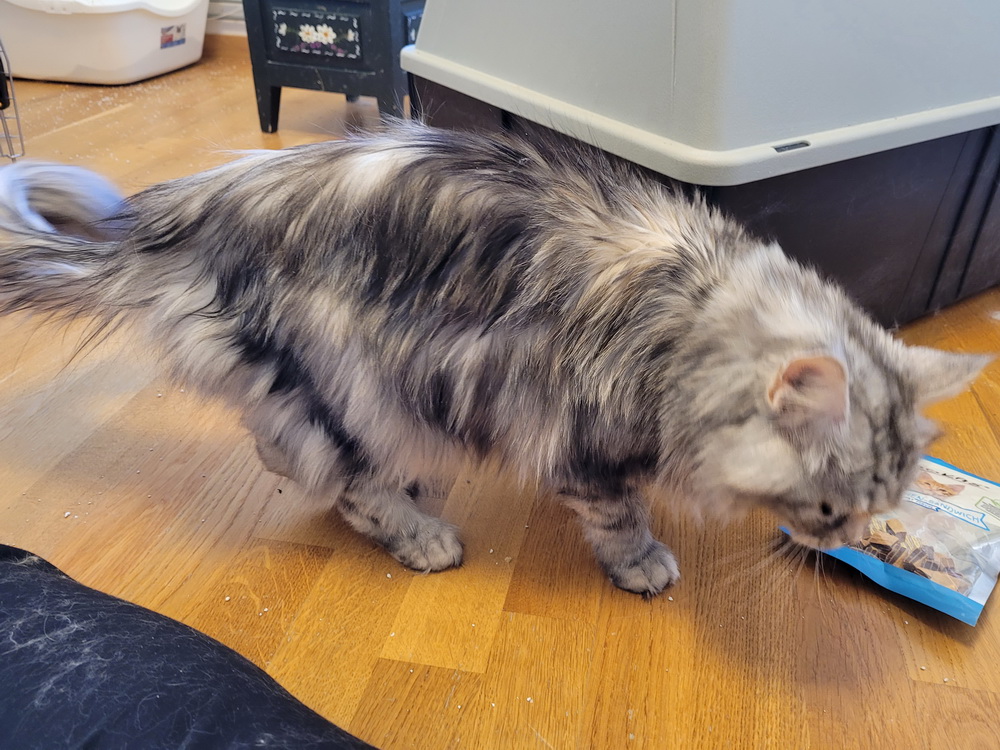 |
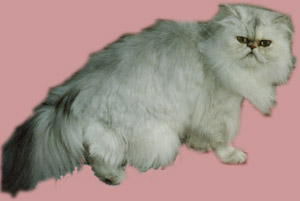 |
| Maine Coon fs 11 | Persian fs 11 |
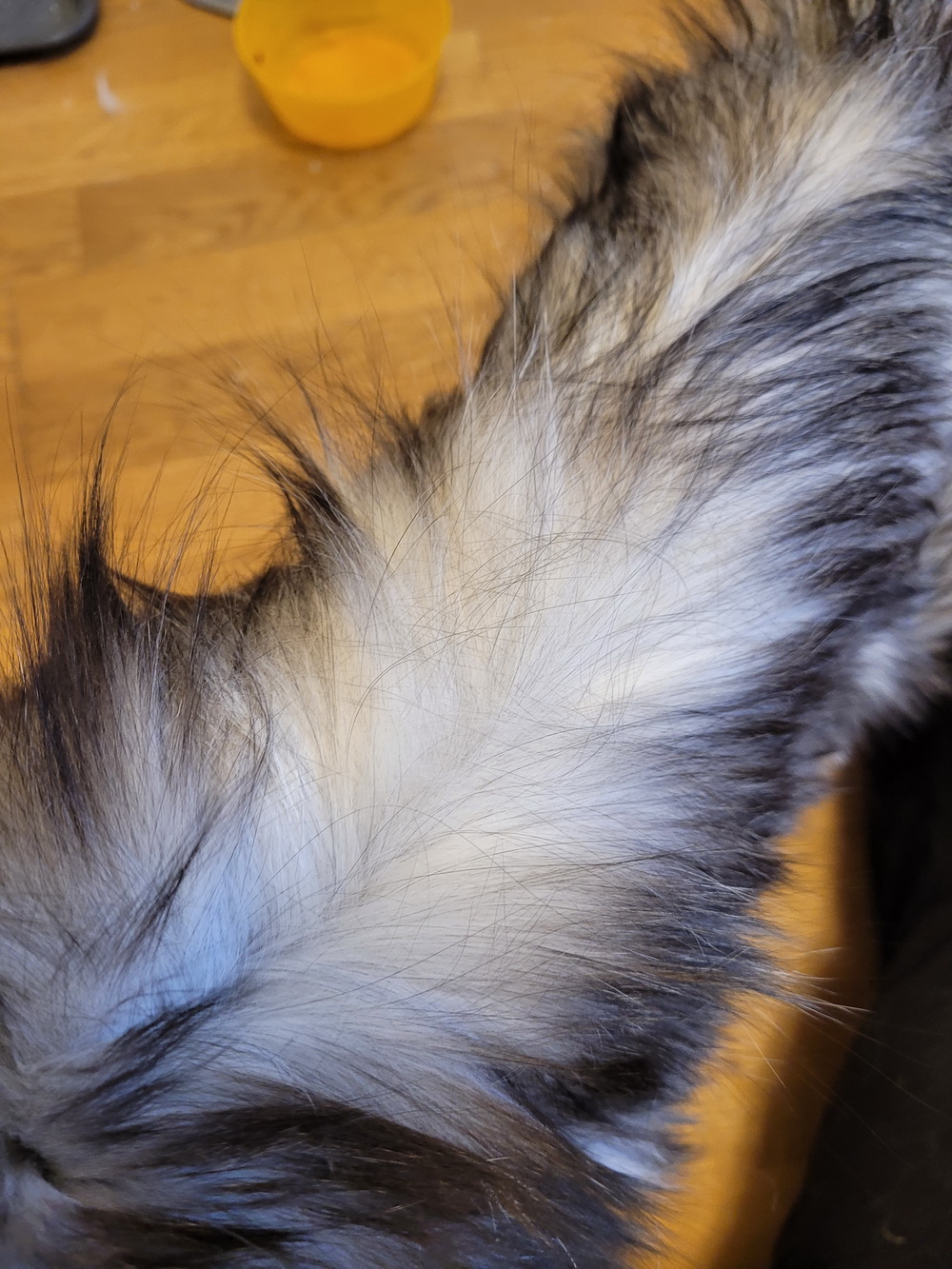 |
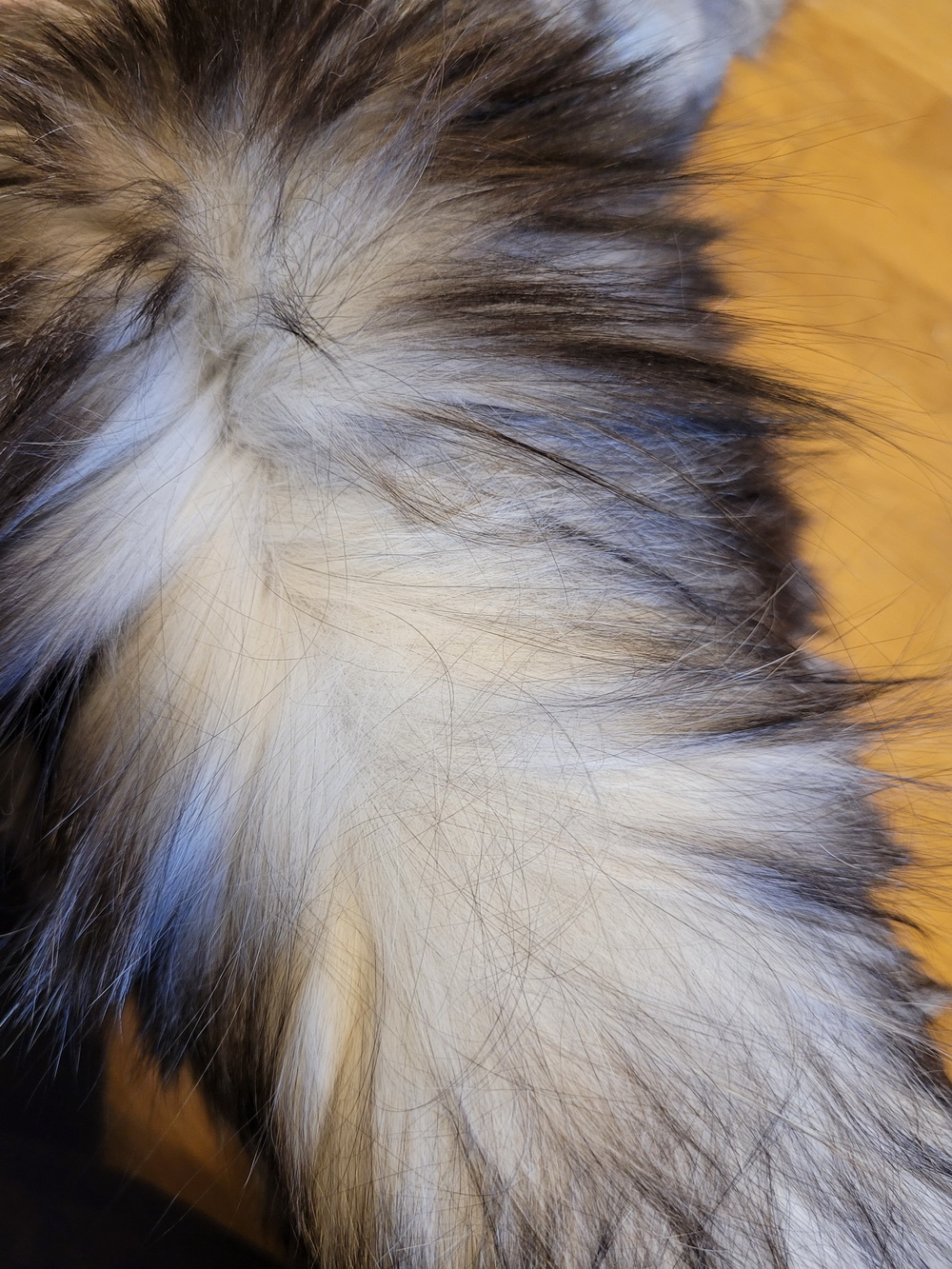 |
| Same MCO fs 11 as above, as seen definitely 1/3 with color and 2/3 pure white | |
Looking at the pictures above, would you say most shaded MCOs look like that these days? Probably not, maybe you even say, that's not a shaded to "me", well please remember you did not write the standard, you probably learned from those not knowing what a correct shaded should look like either. Please read the standard and start breeding according to standard, this goes for everything when we are breeding, breed to standard when it comes to type, pattern, and colors always read the standard and make sure to breed according to this no matter what your personal opinions are.
|
Note!
- This is very important to remember today, if a cat is to be almost pure white and registered as shaded, how on earth do you get a shell, how do you get too much brighter from that?
- Also, note that how bright (pale) or dark a shaded is can vary a lot over the year depending on the condition and shedding periods.
Let's continue with Silver Shell.
Former (chinchilla when it comes to black pigmented cats).
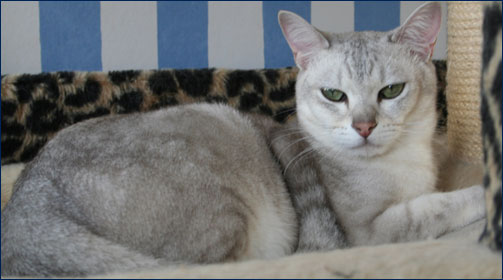 |
 |
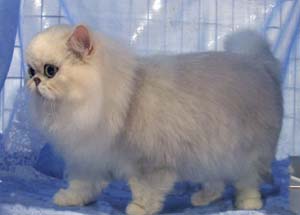 |
| Burmilla ns 12 | Maine Coon ns 12 | Chinchilla Persian ns 12 |
At the moment I do not have any pictures of a ns 12 Maine Coon, at least non where I can say that this is a wideband ns 12 or fs 12 so we just have to leave it at the moment.
Remember the genetics if you have not read that go back to the previous article and read about genetics for a cat to be shell both parents need to be shaded or Shell (Wideband).
|
Note!
- This is very important to remember today, in regards to Shell, if a shell is much lighter than a shaded, a shaded one cannot be almost white!
- Also, note that how bright (pale) or dark a shell is can vary a lot over the year depending on the condition and shedding periods.
It's time to continue with the non-silver wideband and we start out with the Golden tabby, all those are very, very undeveloped so far and we need to do a lot of selective breeding.
Goldens will have the (y) behind their normal color code, I did add dy and ey in the list, however, I don't think we have ever seen one in the Maine Coon breed, but they exist in other breeds, which means we do have them we just do not know how to recognize them, it's possible that the wideband trait does not show if the cat is red or cream, this does not mean that the cat cannot be genetically wideband.
I know that there are beliefs that the wideband is a different trait on the MCO than in for example the Persian or British Shorthair, I think this comes from the newly discovered mutations in the British Shorthair caused by the Corine gene. I have to go into this very briefly for you to understand. A couple of years ago they discovered very extreme golden cats in the British Shorthair and Longhair breed, at first those cats were just registered golden, even though they discovered the trait seemed to be recessive (remember wideband are dominant). They started a huge investigation and not many years after those extreme golden cats were discovered, they got a DNA test for this trait and the trait was named Copper (I know there are other names also used, but for some reason, it seems like the associations cannot agree on a name).
But when it comes to MCO we are talking about the wideband. Remember as in the Shaded and Shell articles this is what I have learned and seen since I started looking at those colors and learning more, about 10-12 years ago, even if it's just about 2 years since I actually started to breed for them. The reason for me going into breeding wideband is primarily to be able to document progress, development of the color, details, and so on, however, I would never ever let the color be more important than health, genetic variation, type, or temper so it's a very, very slow process.
| Golden Shell | 1/8 Of the hair is colored, the hair from the root and up to the last 1/8 is very warm from dark yellow to apricot. |
| Golden Shaded | 1/3 Of the hair is colored, the hair from the root and up to the last 1/3 is very warm from dark yellow to apricot. |
| Golden Tabby | The yellowish bands in the hair are somewhat wider than on a regular tabby, this gives you in general a lighter expression of color. Still from dark yellow to apricot. |
| Normal Tabby | This is somewhat tricky do not mistake a warm normal tabby for golden it's not the same thing. Remember that you need to see the wideband for the cat to be golden. |
I just want to add a quick reminder, everything that "all that glitters is not gold"!
At first, silver shaded was the big thing, but now many breeders turned to golden instead, The tragedy is that most do not even know what they are doing. I have heard statements like the shaded lines are so sick, I want to go for golden instead, breeders who have several "shaded" (well if they are shaded and not the other trait), buying goldens for a LOT of money because they want to breed golden instead? Not understanding that they could just mate the shaded cat to a nonsilver, possibly they would need to take it in two steps since I suspect many of those shaded are homozygous silver. But still two steps and you got your own bred golden. Buying new cats to get golden if you already have wideband just shows how little those breeders really know about genetics.
I also would like to give a slight warning when it comes to ticked tabbies, homozygous ticked tabbies can lead you to believe that you got a shaded one since they will also lack stripes on the legs. Ticked is also a pattern that can seem to be very golden at the roots by default.
Another thing is that it seems like most breeders today think that as soon as a cat has a warm tone between the eye and the ear it's golden.
As late as yesterday I was sent a picture of a very strange-looking kitten, extremely coppery warm between eye and ear and the rest of the body was just greyish. I think there are so many wrong-registered cats out there. I believe we have many, many true wideband cats registered as normal tabbies, but also a LOT of just extremely warm ticked tabbies registered as golden.
I also want to mention the eyes, I heard many breeders say that a golden MUST have green eyes, that's correct if it's a Persian or Exotic, in their standard it says that they must have green eyes, and that goes also for shaded as well as chinchilla. But in the overall standard and in the standard for the MCO, and some other breeds there is nothing mentioned about the eyes.
So, with that said, a golden can be with any eye color.
Well, let's get into it!
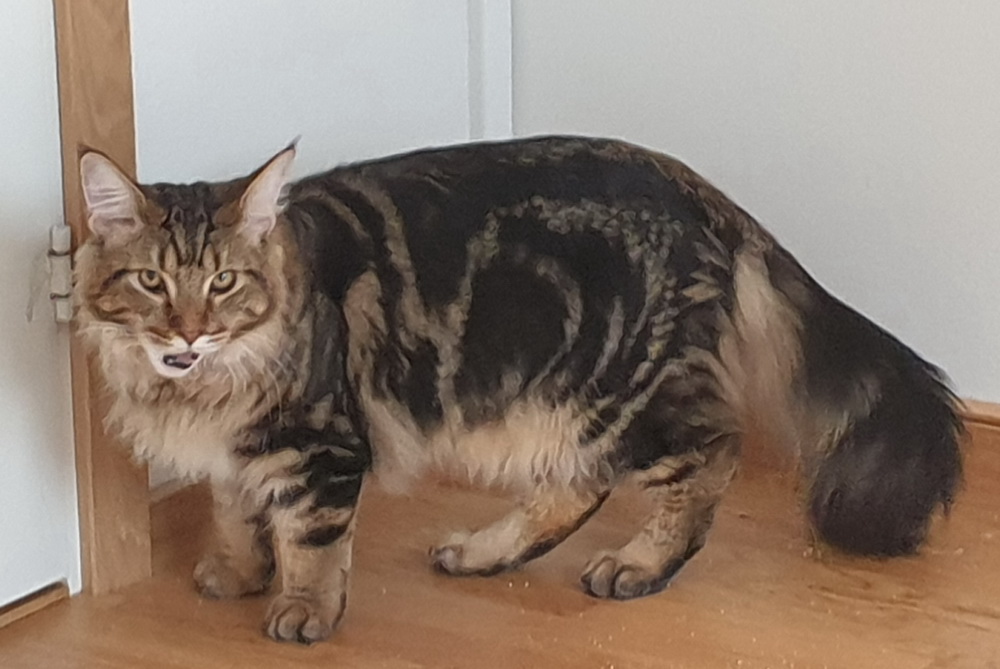 |
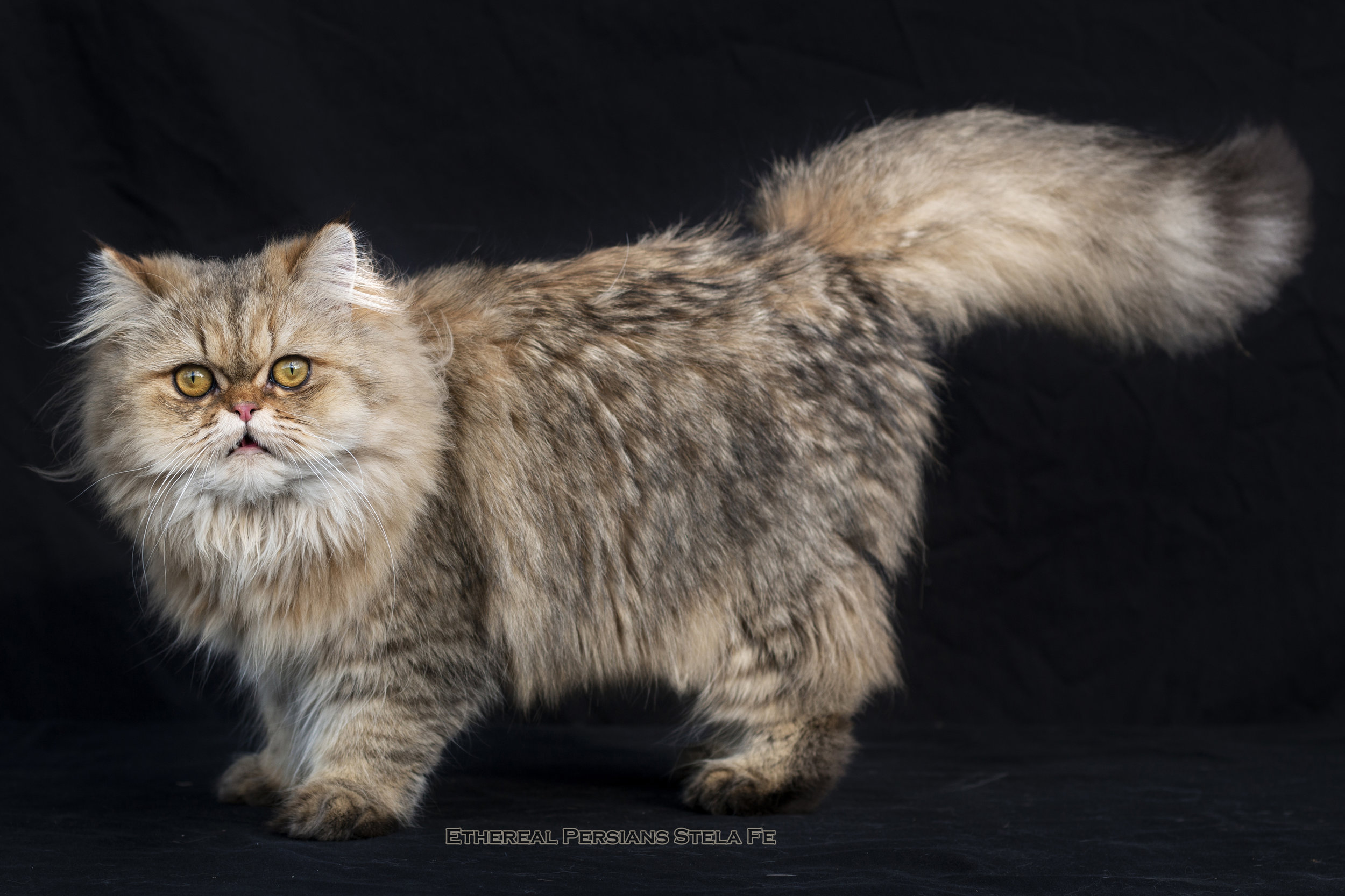 |
| Maine Coon Goldentabby This one is a golden tabby with a classic as you can see. The Persian beside here is of course a bit brighter it's a longhair but also spotted. |
Persian Goldentabby Copyright of photos held exclusively by Roxana Perez. Distribution of photos is allowed and encouraged for non-monetary purposes only. https://etherealpersians.com/ |
|
A golden shaded is no more than a silver shaded without the silver. They will be born with a clear pattern that later on when the fur is being longer will subside and then disappear. However, patterns will show from time to time depending on shedding and condition.
Same as with the silver variations the Golden shaded will likely be darker in the summer and a bit lighter in the winter.
 |
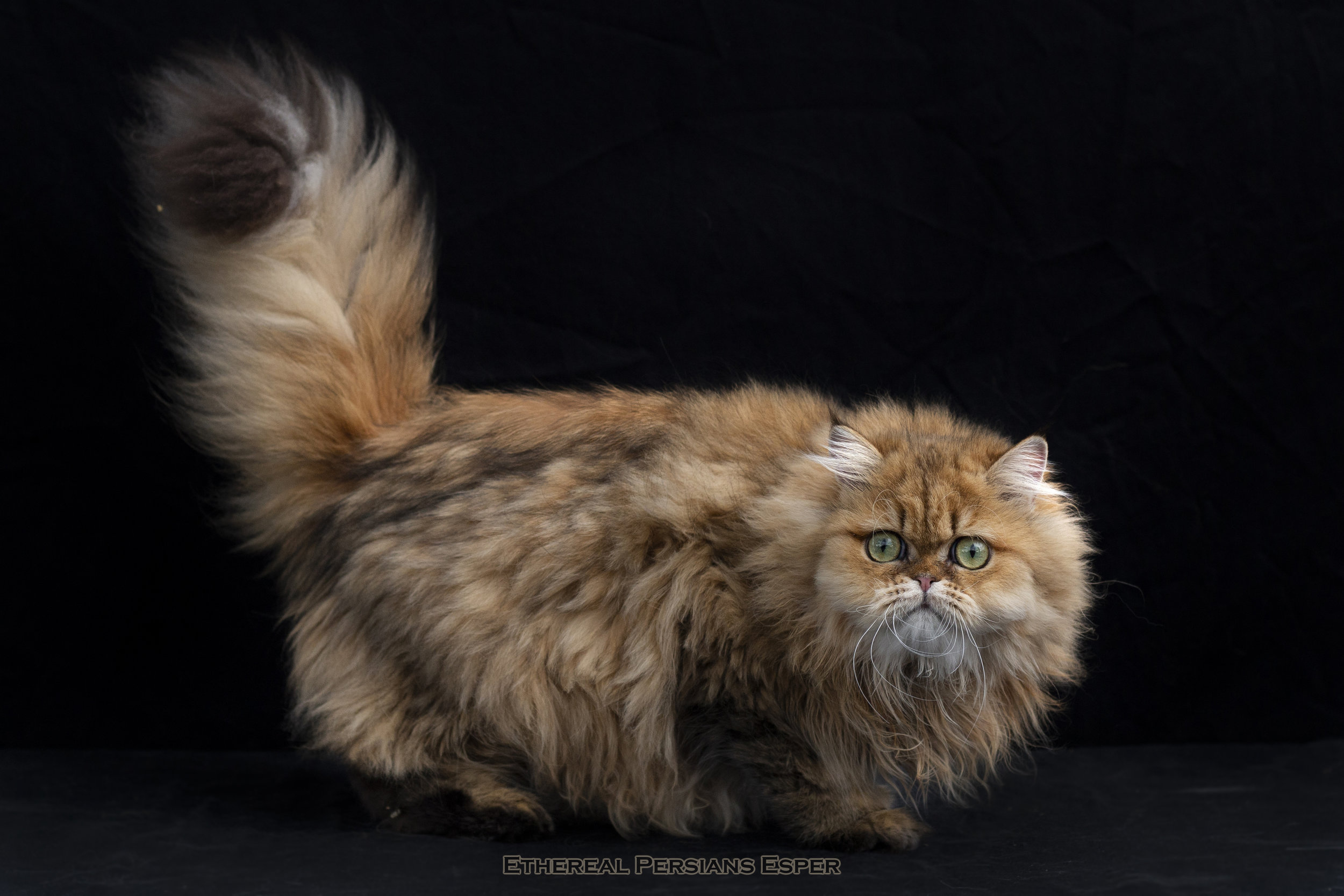 |
| Golden Shaded MCO |
Golden Shaded PER |
|
 |
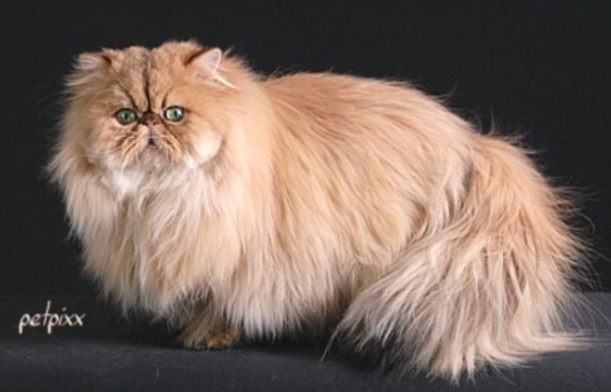 |
| PER ny 12 |
The genetic designation for Agouti (read the other articles about color to fully understand this) is A, a golden tabby, shaded or shell (same as for the silver variations), must be Agouti (with pattern), they could be homozygous or heterozygous so AA or Aa, as seen above a shaded must have silver eighter homozygous II or heterozygous Ii, while a golden does not have any silver ii. Both variations need to have the wideband gene.
Golden seems to be even more uncommon than shaded, I think that's because it's even harder to determine golden if it's not a good golden and this trait is even more unknown by many breeders even those who breed for the silver variations. And I know that in some associations Golden is not even recognized and allowed, which is quite strange since the same associations do approve the silvervariants.
|
Below is the same table I used in other articles, here you can see the hairs of the different patterns.
Don't mind my very terrible skill in painting, but here are some, well visual pictures of the coat of the different patterns.
| |
|||||||
| Silver Shell | Silver Shaded | Silver (pale) Still only in theory |
Silver tabby | Golden shell | Golden Shaded | Golden tabby | Normal tabby |
By: Malin Sundqvist










